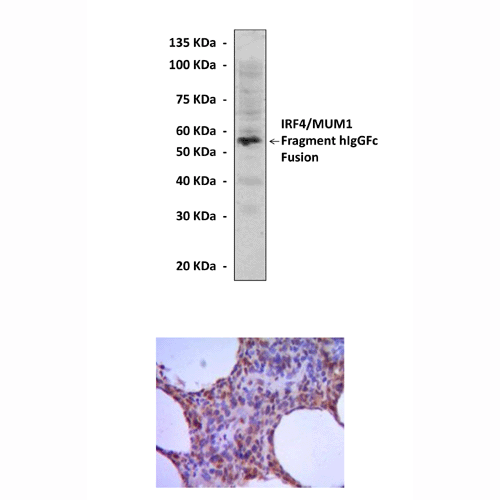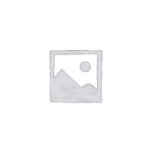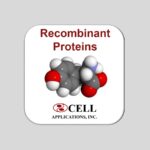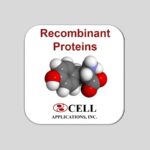Anti-IRF4/MUM1: Mouse IRF4/MUM1 Antibody
Mouse IRF4/MUM1 Antibody: Mouse IRF4/MUM1 Antibody
Size: 100 ul
Price: $413.00
Description
For many genes, MUM1/IRF4 functions as a positive regulator of transcription, using its C-terminal transactivation domain. However, MUM1/IRF4 can repress the expression of some interferon-inducible genes by binding to interferon-stimulated response elements (ISREs) in their promoters, displacing the interferon-responsive IRF factors Irf1 and Irf2. MUM1/IRF4 can also repress other genes, such as BCL6, through as yet undefined mechanisms. Alone, MUM1/IRF4 binds DNA weakly due to its C-terminal autoinhibitory domain. However, MUM1/IRF4 can bind with high avidity to the 3′ enhancers of both κ and λ immunoglobulin light chains in conjunction with the ETS-family transcription factor PU.1 and the closely related factor SPIB. Moreover, additional protein-protein interactions between MUM1/IRF4 and other regulatory factors modulate its DNA-binding properties and/or transactivation potential. MUM1/IRF4 is an essential regulator at multiple steps in B-cell differentiation and plays a critical role in the adaptive immune responses of mature B cells. MUM1/IRF4 is also required for immunoglobulin class switch recombination (CSR). IRF4-deficient B cells fail to upregulate AID, the critical enzyme that mediates CSR. Outside the B-cell lineage, MUM1/IRF4 is essential for several stages of T-cell and myeloid-cell differentiation. IRF4 is emerging as a critical regulator of T-helper-cell differentiation, playing a required role in both Th2 and Th17 development by controlling cytokine expression and apoptosis. Mice deficient in MUM1/IRF4 exhibit impaired B- and T-cell function, absence of plasma cells with a drastic reduction in serum immunoglobulins, and an abrogated response to B-cell activation.3 However, MUM1/IRF4-deficient mice have no apparent phenotypes outside of the lymphoid and myeloid lineages, in keeping with the restricted expression of MUM1/IRF4 in these cell types. Therefore, potential therapies aimed at MUM1/IRF4 would have restricted and potentially manageable on-target toxicities within the hematopoietic system.4
2. Lu, R.: Trends Immunol. 29:487-92, 2008
3. Shaffer, A.L. et al: Clin. Cancer Res. 15:2954-61, 2009
4. Mudter, J. et al: J. Clin. Invest. 118:2415-26, 2008
Details
| Cat.No.: | CP10309 |
| Antigen: | Raised against recombinant human IRF4/MUM1 fragments expressed in E. coli. |
| Isotype: | Mouse IgG1 |
| Species & predicted species cross- reactivity ( ): | Human |
| Applications & Suggested starting dilutions:* | WB 1:1000 IP n/d IHC 1:50 – 1:200 ICC n/d FACS n/d |
| Predicted Molecular Weight of protein: | 78 kDa |
| Specificity/Sensitivity: | Detects endogenous IRF4/MUM1 proteins without cross-reactivity with other family members. |
| Storage: | Store at -20°C, 4°C for frequent use. Avoid repeated freeze-thaw cycles. |
*Optimal working dilutions must be determined by end user.




